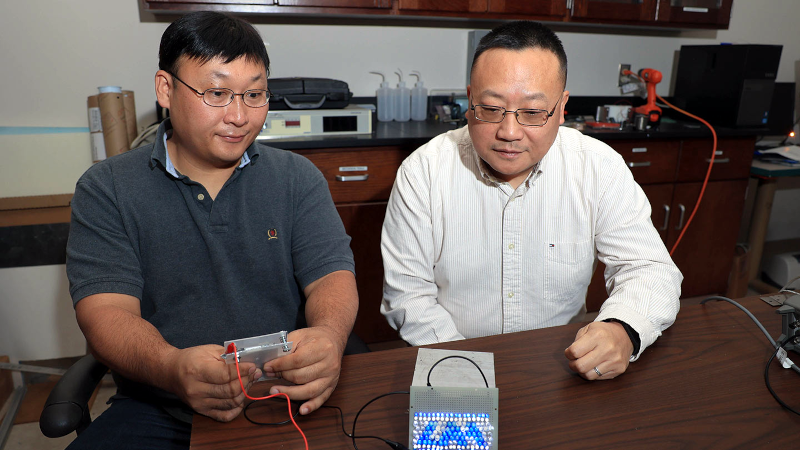We were always amused that one of the biggest scientific discoveries of the recent past — graphene — was started with pencil lead and Scotch tape. Now, researchers at the University of Alabama in Huntsville have determined that double-sided Scotch tape can improve triboelectric power generators. Triboelectric generation, of course, is nothing new. These energy harvesters take mechanical and thermal energy and turn them into tiny amounts of electricity. What’s new here is that PET plastic, aluminum, and double-sided tape can make an inexpensive generator that works well.
Keep in mind we are talking about little bits of power. In the best scenario with the device stimulated at 20 Hz, the generator peaked at 21.2 mW. That was better than some designs that only got to 7.6 mW in the same configuration.
The aluminized PET film used is not hard to obtain and a large roll is under $11. This seems like something you could put together easily if you wanted to do your own experiments.
It is something of a standard test to show how many LEDs you can power with devices like this. The researchers powered a flashlight, 476 LEDs, and a laser diode using the new generators.
If you don’t think self-power has any practical applications, think again. We’ve seen tape used in triboelectric generators before, by the way.
















Ok, I wonder what these guys are really doing all day long ;-) Scotch tape after sandwich…
https://www.sciencedirect.com/science/article/abs/pii/S2211285520309885?via%3Dihub
No word on whether Big Kale is behind it all…
https://web.archive.org/web/20171023065703/https://www.mindbodygreen.com/0-22984/the-strange-mystery-of-who-made-kale-famous-and-why.html
What is the durability of that tape?
100000 cycles from the paper it seems.
Aluminized PET film? Like the stuff around my Oreos and Fritos?
Like a capacitor
I wonder if the stickiness is a necessity for this type of triboelectric material.
I believe that the flexibility of the adhesive substrate acts as a “muscle” to pull it back to a starting point or rebound when depressed, and double sided allows the double the energy by utilizing both sides of the tape or film.
I’ve always been curious to try something like this with a dry cell hydrogen generator.
Actually a wet cell would work just as well I guess?
Wet cells tend to oxyde your plates faster though
True, they are also more dangerous. I was using a homemade HHO torch one evening when flashed back past my spark arrester and bubbler. When it hit the wet cell the whole works got shot next my head, across the shop, and against the wall. Scare the bejesus out of me.
I was really curious if coating the metal plates in graphene or maybe even a graphene coating on plastic plates would make the process any more efficient as opposed to just plain old stainless steel plates?
What got me thinking about this originally was I read somewhere that they’d used graphene nano particles and magnesium as a catalyst to generate hydrogen from water using light.